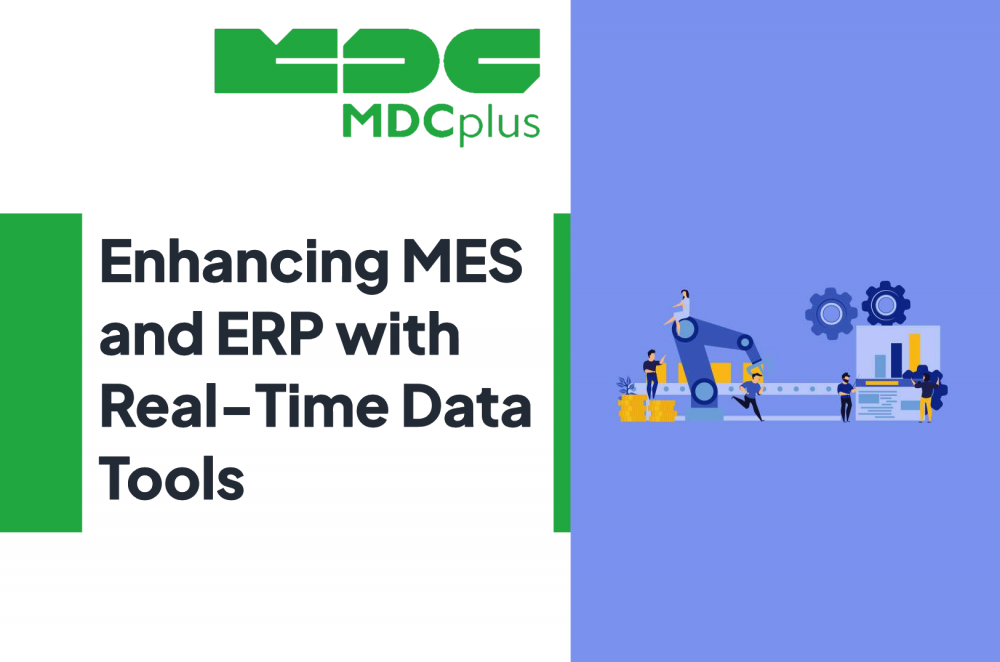No more manufacturing downtimes
Get started with your projectEnhancing MES and ERP with Real-Time Data Tools
What’s changed, however, is how we interact with these systems.
Rather than replacing MES and ERP, a new generation of data collection tools is emerging not as competitors, but as collaborators—agile complements that amplify the capabilities of legacy infrastructure. The result? A more connected, transparent, and agile shop floor without the upheaval of a full systems overhaul.
Legacy Systems, Lasting Value
MES and ERP systems have long been the pillars of industrial operations. MES tracks and documents the transformation of raw materials to finished goods, while ERP weaves that data into the broader tapestry of business functions—finance, supply chain, procurement.
Yet, despite their robustness, these systems often suffer from a common limitation: they weren’t designed with real-time, granular shopfloor data in mind. Their strength lies in integration and structure, not speed or sensor-level fidelity. This is where modern data collection tools step in.
Filling the Gaps—Not Creating New Ones
Today’s data collection solutions are built to capture, process, and contextualize data directly from the source—machines, operators, sensors, and more. They do what traditional MES and ERP systems can’t: offer real-time visibility, flexibility, and precision.
But the best part? They don’t demand the deconstruction of your existing digital ecosystem.
Instead, these tools serve as a layer atop legacy systems, enriching them with context-rich, high-frequency data. For instance, while your MES may record production cycles, a data collection tool can monitor machine vibrations, operator inputs, and energy usage in real-time—data that the MES can then use to enhance traceability or inform predictive maintenance schedules.
The API Advantage: Seamless Interoperability
Much of this symbiosis is enabled by modern APIs and lightweight middleware. Today’s best data collection platforms are designed to be interoperable—able to speak the language of your existing systems through secure, bidirectional integrations.
This means manufacturers can gradually layer in modern capabilities—OEE tracking, digital quality checks, machine learning insights—without touching the core ERP or MES workflows. It's evolution, not revolution.
Empowering People, Not Just Machines
There’s also a human side to this story. Digital data collection tools often include intuitive dashboards, mobile apps, and role-specific interfaces that make insights accessible to operators, supervisors, and plant managers alike.
Where legacy systems might bury critical insights several clicks deep, a modern interface brings KPIs to the surface—often in real time—so decisions can be made on the shop floor, not just in the boardroom.
A Smarter Path Forward
The future of manufacturing isn’t about scrapping what works. It’s about building on it.
By complementing existing MES and ERP systems with real-time, contextual data from collection tools, manufacturers can unlock new levels of agility, transparency, and performance—without costly rip-and-replace projects.
As factories navigate the pressures of global competition, labor shortages, and increasing demand for customization, the ability to modernize intelligently will separate the agile from the obsolete.
And in that journey, data collection tools are proving to be not just a smart addition—but a strategic necessity.
About MDCplus
Our key features are real-time machine monitoring for swift issue resolution, power consumption tracking to promote sustainability, computerized maintenance management to reduce downtime, and vibration diagnostics for predictive maintenance. MDCplus's solutions are tailored for diverse industries, including aerospace, automotive, precision machining, and heavy industry. By delivering actionable insights and fostering seamless integration, we empower manufacturers to boost Overall Equipment Effectiveness (OEE), reduce operational costs, and achieve sustainable growth along with future planning.
Ready to increase your OEE, get clearer vision of your shop floor, and predict sustainably?
